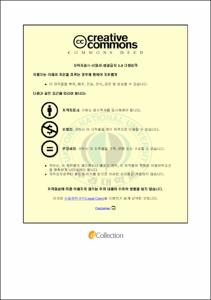CVM을 이용한 생분해성 어구의 경제적 편익 분석
- Alternative Title
- Estimation of Economic Benefit of Biodegradable Fishing Net by Using Contingent Valuation Method(CVM)
- Abstract
- The main purpose of this study is to estimate willingness to pay (WTP) by the general publics, assuming that they pay tax or charge for protecting marine environment through developing and supplying the degradable fishing nets. This study employed a contingent valuation method(CVM) which is an econometrical method. Data that is used in this study was collected at the national level for CVM via internet survey. Tobit model was applied to WTP estimation, based on the national-internet survey data.
The survey was conducted by using both double-bounded dichotomous choice and open-ended survey. The first bid of double-bound dichotomous choice survey was set to 350 won. If the public accepts WTP of the first bid, the second bid was set to double (700 won). If not, the bid was set to half(175 won) of the first bid. Last, the survey was designed to state a maximum WTP that each individual is willing to pay.
As the results of this survey, 21.8 percent of respondents showed WTP at 350 won and 40.7 percent at 700 won. WTP between 1 and 175 won was 1.3 percent. Some 25 percent among them were willing to pay nothing.
Variables in the tobit model include marine environment, age, the number of family members, educational level and personal disposable income. Observing the marginal effects, WTP appeared to decrease by 69.9 with a low level of marine environmental concern, to decrease by 6.0 with age, to increase by 32.9 with the number of family members and to increase by 21.4 with educational level. Also, the WTP showed an increase by 24.5 with personal income.
Using the tobit model, annual average WTP per family for developing and supplying the biodegradable fishing nets was estimated at 5,294 won and national total amount was some 84.2 billion won. This includes both of use and non-use value of biodegradable fishing nets.
The development of environment-friendly fishing technology, such as biodegradable fishing net, may mitigate the marine environment from being damaged and/or destroyed and help marine fisheries resources to be restored. Moreover, the improvement of marine environment can make a significant contribution to generating indirect benefits such as ocean/coastal tourism, which is an additional benefit that would be brought by development and dissemination of bio-fishing gears.
- Issued Date
- 2010
- Awarded Date
- 2010. 2
- Type
- Dissertation
- Publisher
- 부경대학교
- Alternative Author(s)
- Kwon, Hyeok Jun
- Affiliation
- 부경대학교 대학원
- Department
- 대학원 해양산업경영학과
- Advisor
- 박성쾌
- Table Of Contents
- Ⅰ. 서론 1
1. 연구배경 및 목적 1
2. 연구 방법 및 내용 3
Ⅱ. 선행연구 5
1. CVM의 이론적 연구 5
2. CVM을 이용한 실증 연구 8
Ⅲ. 이론적 배경 14
1. 환경재화의 개념 14
2. CVM의 이론 16
Ⅳ. 생분해성 어구의 개발 및 보급 26
1. 생분해성 어구의 개발 26
가. 생분해성 수지의 개념 26
나. 생분해성 어구의 개발 과정 27
2. 생분해성 어구의 보급 29
가. 시범사업의 지침 29
나. 생분해성 어구 지원규모 및 실태 31
Ⅴ. 실증분석 33
1. 자료 수집 및 통계 33
가. 설문 설계 및 시행 33
나. 응답자의 특성 37
다. 응답자의 인식 분석 39
2. 분석모형 49
가. 모형설정 49
나. 실증모형 54
3. 추정 결과 59
Ⅵ. 결론 64
Ⅶ. 참고문헌 67
【부 록】 73
- Degree
- Master
- Files in This Item:
-
-
Download
 CVM을 이용한 생분해성 어구의 경제적 편익 분석.pdf
기타 데이터 / 1.25 MB / Adobe PDF
CVM을 이용한 생분해성 어구의 경제적 편익 분석.pdf
기타 데이터 / 1.25 MB / Adobe PDF
-
Items in Repository are protected by copyright, with all rights reserved, unless otherwise indicated.